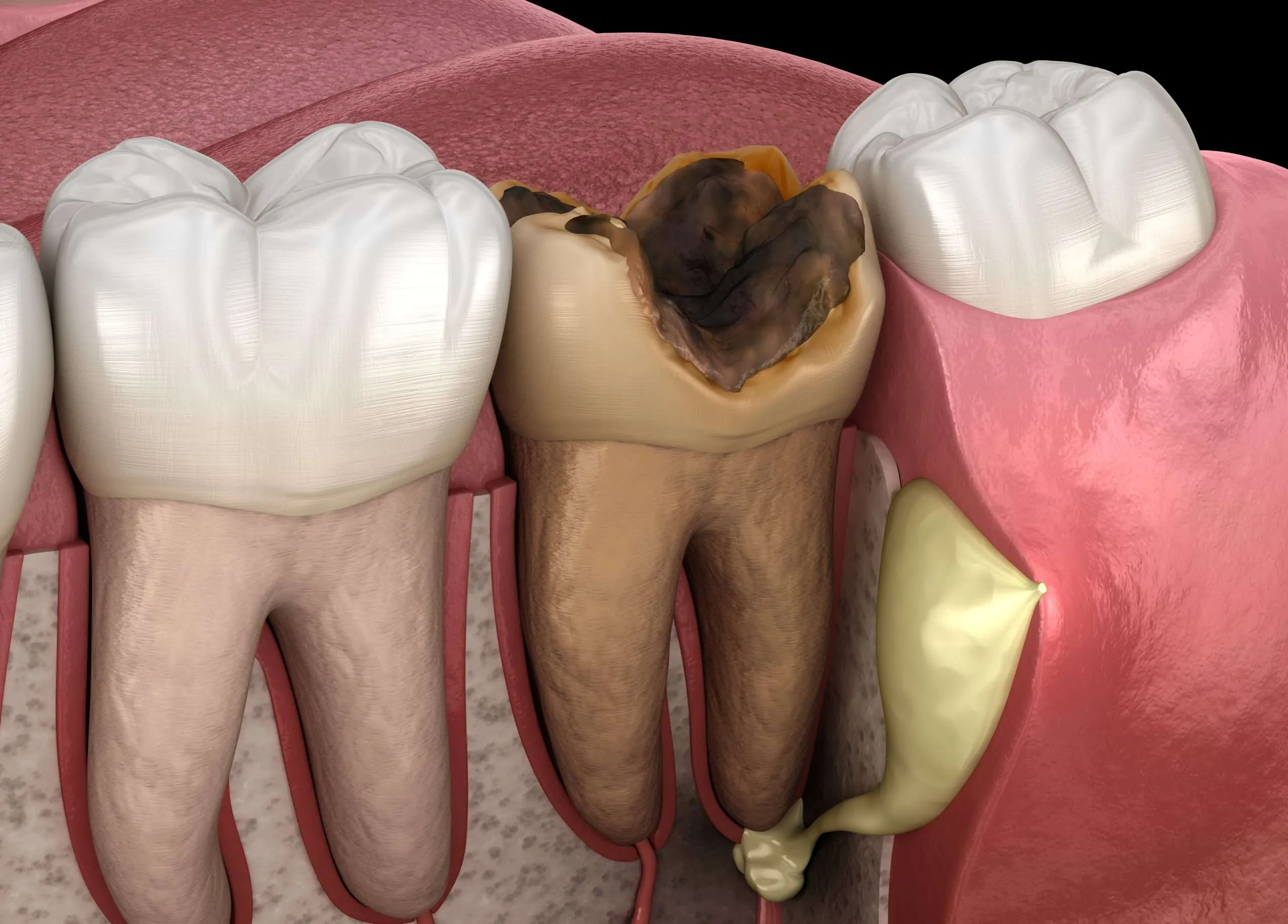What Exactly Is a Dental Abscess?
A dental abscess is a pus-filled tooth infection caused by the buildup of bacteria within the tooth or gum tissues. This condition occurs when bacteria reach the innermost part of the tooth containing nerves and blood vessels, usually through cavities, cracks, or dental trauma. The body responds by forming pus as a defense mechanism against the infection.
There are two main types of abscesses:
Periapical abscess – occurs at the tip of a tooth’s root due to infection inside the tooth.
Periodontal abscess (gum abscess) – develops in the gum tissue and supporting bone as a result of severe gum disease.
Both types require immediate professional treatment to prevent the spread of tooth infection to surrounding areas.
Distinct Symptoms You Shouldn’t Ignore
The symptoms of a dental abscess often appear suddenly and are typically very painful, sometimes interfering with daily activities. Common signs include:
Throbbing pain that may radiate to the ear, jaw, or neck
Swelling in the gums or cheeks
A visible pus-filled bump or abscess on the gums
Loose or sensitive teeth
Bad breath or an unpleasant taste in the mouth
Fever, swollen lymph nodes, and a general feeling of discomfort
If you notice any pus-filled swelling or persistent pain, see your dentist immediately before the infection spreads further.
The Difference Between a Dental Abscess (Periapical) and a Gum Abscess (Periodontal)
Aspect | Dental Abscess (Periapical) | Gum Abscess (Periodontal) |
Location of infection | At the tip of the tooth root | In the gum tissue and supporting bone |
Main cause | Deep cavities or trauma that reach the tooth nerve | Advanced gum disease (periodontitis) |
Main symptom | Throbbing pain, loose tooth | Swollen, red, and tender gums |
Treatment | Root Canal Treatment (RCT) or tooth extraction | Gum cleaning and pus drainage |
Understanding the difference between a dental abscess and a gum abscess is essential to determine the most effective and targeted treatment.
The Dangers of Leaving a Dental Abscess Untreated
A dental abscess will not heal on its own without proper medical care. If left untreated, the infection may spread to:
The jawbone
Facial and neck areas
The maxillary sinus
This condition can lead to serious complications, including systemic infection. Additionally, pressure from pus accumulation may damage surrounding tissues and result in tooth loss.
Why Professional Dental Treatment Is Essential
Treating a dental abscess requires more than antibiotics or painkillers. While antibiotics help control the spread of infection, the source must be properly cleaned and treated.
A dentist will perform a clinical examination and periapical X-ray to identify the cause and location of the dental or gum abscess, then recommend the most suitable treatment for your condition.
Steps in Treating a Dental Abscess
Treatment for a dental abscess generally includes:
Pus drainage – the dentist makes a small incision in the infected gum area to release pus and relieve pressure.
Root Canal Treatment (RCT) – performed if the infection originates from the tooth pulp.
Tooth extraction – if the affected tooth cannot be saved.
Antibiotics and pain relief – to control infection and reduce discomfort.
Follow-up care and education – including maintaining good oral hygiene, brushing twice daily, and regular dental check-ups every six months.
Conclusion
A dental abscess is a serious tooth infection that requires immediate professional attention. Do not ignore symptoms like throbbing pain, swollen or pus-filled gums, or facial swelling.
Early treatment by a professional dentist can save your tooth, prevent severe complications, and maintain your overall oral health.
References
Sanders JL, Houck RC. Dental Abscess. [Updated 2023 Feb 20]. In: StatPearls [Internet]. Treasure Island (FL): StatPearls Publishing; 2025 Jan-. Available from: https://www.ncbi.nlm.nih.gov/books/NBK493149/
Yousefi Y, Meldrum J, Jan AH. Periodontal Abscess. [Updated 2023 Jun 12]. In: StatPearls [Internet]. Treasure Island (FL): StatPearls Publishing; 2025 Jan-. Available from:https://www.ncbi.nlm.nih.gov/books/NBK560625/

